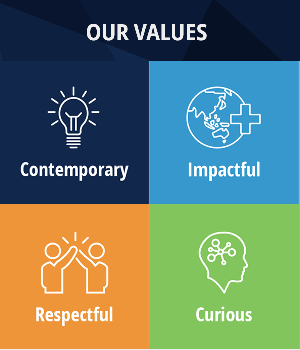What’s your data look like?
As a business owner you don’t think like an employee where you rock up to work, get paid, go home and switch off. You’ve always got to be looking at least three months ahead, asking yourself what’s happening? What has happened? What’s coming up?
Simon Chesson, accountant and business advisor with AustAsia says thoughts run more along the lines of “if I don’t get this work tomorrow, my family might not eat, so I need to keep doing my work”. But thinking and planning ahead is a fundamental thing that some small business owners lose sight of.
This is where data information and visualisation software can help.
Data information systems are how you handle your data. You’ve got your invoices, bank account, and suppliers. How do you handle that information? You can make your accounting system do the financial data for you and add on other software to make it even more efficient.
For example, there’s a couple of apps, Receipt Bank and Hubdoc, where you take photographs of your receipts, you don’t have to make up a spreadsheet or manually enter the data. It recognises the information on the receipt, takes off the GST, checks up the ABN for that supplier and saves a lot of time. They cost money, but they integrate with accounting programs. Accountants will generally charge a few hundred dollars to help set the system up.
Visualisation is how that data is shown. For example, you can use the data to look at how you’re tracking this year versus last year, or what could happen in three months or 12 months. The visualisation helps you understand what’s going on in your business.
Chesson explains most accounting software does not currently have visualisation capability. That’s where you can use other software to bolt on to your existing package.
One is called Futrli (formerly CrunchBoards) and ranges between $60 and $1000 per month while another is called Spotlight Reporting and ranges between $250 and $1000 per month. These applications link directly to the data and you can run different metrics. For example, in a consultancy business, staff is the biggest cost. You can track your revenue versus your wage cost. Then you can say “ok, I’m spending too much on wages”, or “I need to bill more”.
Alternatively, for a café or restaurant, normally the metric is one third is wages, one third is cost of goods sold and after other expenses (rent, phones, internet) and tax, hopefully there is a profit at the end.
With visualisation software you can see what is happening currently and predict what is likely to happen. This is important because then “you can start planning instead of hitting a cliff edge because someone hasn’t paid or they’ve fallen over”, says Chesson.
Tableaux and Microsoft Power BI also analyse data, although Chesson says he would only advise people to start looking at them once they’re a medium business pushing into a large business.
They give dashboards and tools like a safety dashboard to look at OHS, to track HR or to look at the biggest suppliers, customers and when projects are finishing. You need to tell Tableaux or Power BI where your data is, which could be in your CRM, financial or HR system.
After using visualisation software, Chesson hears clients say; “oh wow, I didn’t realise that’s what is going on in my business, no wonder I’m feeling busy, no wonder cash flow’s tight”.
In his view, most businesses above five employees should use visualisation software “because it helps with planning GST, tax, super and cashflow”.












